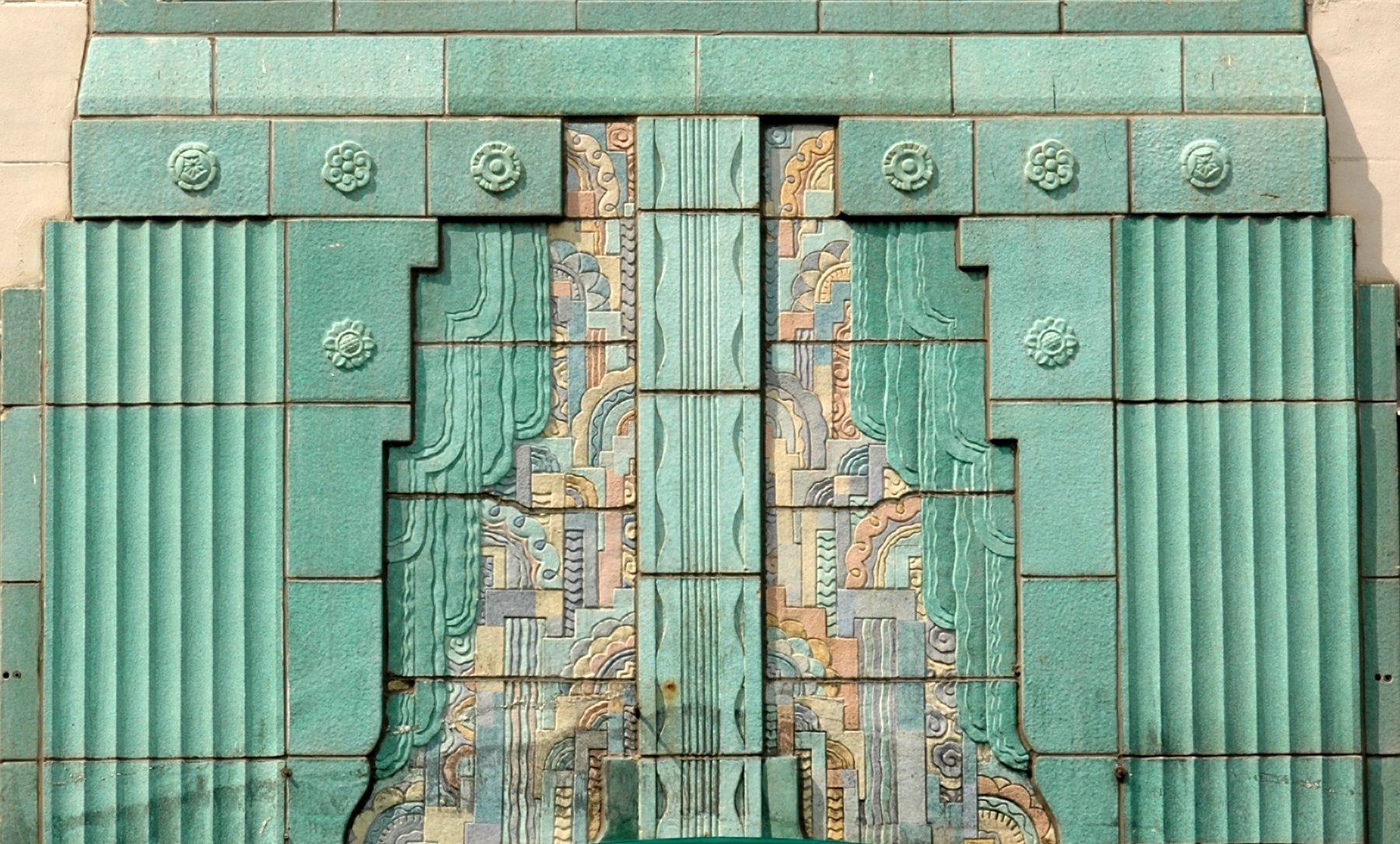#1052. Turquoise Art Deco Facade with Cascade Ornament
The image shows an exquisite example of Art Deco architecture with a characteristic turquoise ceramic facade. We are looking at the central decorative element of the building, likely an entrance group or an expressive architectural accent. The main surface is covered with turquoise tiles creating a rhythmic geometric structure.
The central composition deserves special attention, where turquoise tiles combine with decorative elements in beige and golden hues. The stylized ornament forms a symmetrical pattern reminiscent of a water flow or cascade, emphasized by wavy lines in the central part of the facade. The upper row is adorned with relief floral medallions that give the composition completeness.
A vertical rhythm is created by relief grooves on the main surface, visually elongating the structure and adding dynamism. The use of glazed ceramic tiles is typical for the period of the 1920-30s and reflects the influence of both Art Deco and late Art Nouveau with elements of neoclassicism. The color scheme and ornamentation may indicate its belonging to the heritage of American architecture from the first half of the 20th century, where such decorative facades were particularly popular.
